
Speaking of Russia’s intentions in 1939, the British parliamentarian, soldier, and best-selling author, Sir Winston Churchill (1874-1965), famously observed: ‘I cannot forecast to you the action of Russia. It is a riddle, wrapped in a mystery, inside an enigma; but perhaps there is a key. That key is Russian national interest.’ Commentators today on Putin’s intentions for Russia – and, perhaps even more so, experts on China under Xi Jinping – might be tempted to say the same. Here are riddles wrapped in mystery inside enigmas; but ‘national interest’ is almost certainly still the key.
Following on from the Briefing two weeks ago by my good friend, Dr Varughese John, my theme is again India, but my focus rather different. As a social scientist studying popular religion in India – especially grass-roots Hindu piety and practice – I am very aware that to Indians who live inside and outside their beloved homeland, India is itself a riddle wrapped up in a mystery. But not, perhaps, as Churchill intended his words. Here is another ‘rainbow nation’ that loves its riddles and hungers for mystery, and in which Hinduism is (as, it ever was) the key. We are not speaking of Hinduism, though, as if it were a ‘religion’ in a Western sense. No, to be Indian is to inhabit Hindu culture, to breathe Hindu air and love Hindu mystery. But the new mystery for modern India is how its ancient Hindu culture and spirituality cohabit with, and contribute to, the nation’s drive to urbanize and globalize, to refine itself and ultimately beat its competitors. As the Indian novelist, poet, Professor of English, and Director of the Indian Institute of Advance Study (IIAS), Shimla, Makarand Paranjape (b. 1960), has written: ‘Tradition, modernity, and postmodernity, exist in India, cheek by jowl.’[1] He is right. But this can make discerning India’s intentions and interpreting her actions difficult. If ‘national interest’ is again the key, then where and how does Hinduism help or hinder India’s national interests today?

Let me begin by giving those of you who have never visited India a sense of everyday life, and the place Hindu piety has in it. From my home in southern India, I watch as domestics make their way to work, knowing they will have performed simple rituals before leaving home, may call in on a temple as they pass, and will think and plan for pilgrimages to one or more of the holy Hindu sites around the city. My local temple is old and noisy, and to the majority still the centre of the local community. It distributes prasad (holy food) each day to the hungry and the needy, who gather under its portico hours on end, sheltering from the sun and chewing on (betel nut) paan with glazed eyes. During the COVID pandemic, though closed, temples like this became centres of life and of death, with mass feeding (annadaana) as common as mass infection and the stench of funeral pyres. Has Hindu faith been intimidated by the COVID virus? No, it has been energised by it.
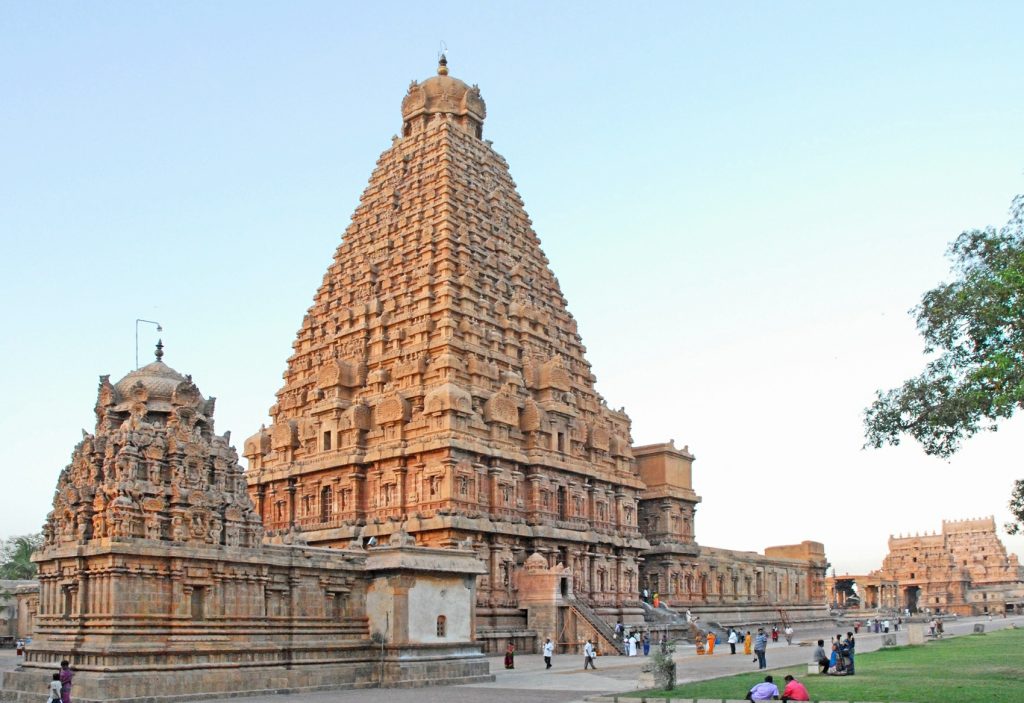
But I don’t need to go far from my front door to see the vibrancy and complexity that Professor Paranjape writes about: modern technology the expected norm for young and old; international news displacing local gossip; dress a choice, not a cultural obligation. So beggars and BMWs, carts and buses, Coke cans and banana leaves, fill over full roads and batter the senses in vibrant extremes. Is Hinduism a disruptive presence in this sea of humanity and cauldron of economic development? No, it’s its cohering, self-justifying – to devotees, peace infusing – soul and rationale. Like a snake slithering across a hot rock, Hinduism adapts and moves to find a comfortable place amid India’s striving to secure its place as global superpower, communications hub and technological megalith.
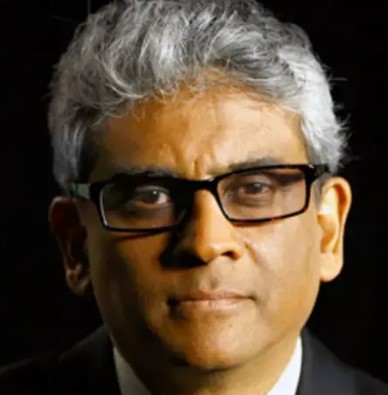
Writing over a decade ago, Minnesota-based contributor to Religion & Ethics Weekly and Director of the Under-told Stories Project, Dr Fred de Sam Lazaro, engaged in a valuable study of Hindu spirituality and (post)modernity in India.[2] His interview-based project has much for us. A Delhi businessman and his family, the CEO of a prominent Hindu TV channel and a sociologist, shed light on how they – and Hinduism – navigate new issues in modern India. Let me take you through some of de Sam Lazaro’s findings.
First, the Gupta family in Delhi. Deepak Gupta runs a photo supply business. He and his wife Bhavana are traditional Hindus. Each day Bhavana places a puja (food offering) in front of their family shrine to Lord Krishna, one of Hinduism’s most prominent gods. To the Guptas, de Sam Lazaro notes, things ‘have changed little’. However, he points out, they ‘worry about the growing influences on their children from the ubiquitous advertising on billboards, on the Internet, on television, influences that they say are already altering the traditionally rigid and hierarchical parent-child relationship’. In the life of the Gupta family, there is a perceived confrontation between modernity and traditional Hinduism.
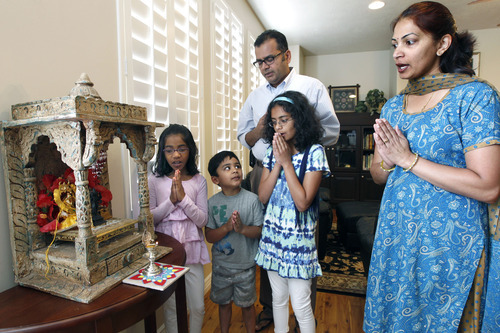
Enter the second case study, the Hindu-oriented channel Aastha TV. As de Sam Lazaro explains, it is ‘exactly that kind of angst [viz. shown by the Guptas] that may be driving the market for a media antidote’, namely, ‘religious-based satellite television channels’. To Kishore Puthran, the General Manager of Aastha TV, ‘[T]here are other TV programs that show a lot of divorce or extramarital affairs and things that way’. Hence, to Pramod Joshi, CEO of Aastha TV, the channel’s mission is, ‘to take the Indian culture, the Indian heritage, the social and spiritual culture of India to the world’. It is estimated Aastha TV reaches 250 million viewers week-on-week, with round the clock Hindu preaching, and material on its cultural and religious cousins Sikhism and Jainism. Unsurprisingly, a vast audience has fuelled lucrative advertising deals and strong share prices on the Bombay Stock Exchange. Hinduism and modern technology have found common cause here. The heads of Aastha TV are driven by their vision for a mutually beneficial accommodation of Hinduism to modernity in India.
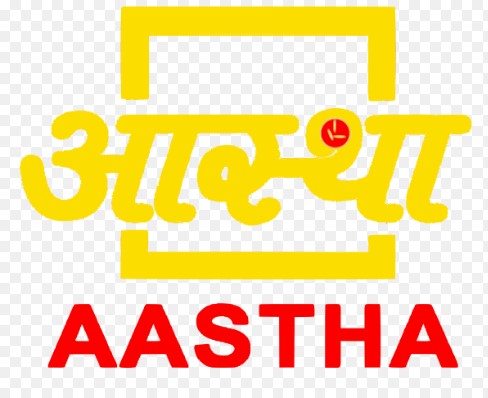
De Sam Lazaro then reports on his conversation with the eminent Indian sociologist Ashis Nandy (b. 1937). Crucially, Nandy confirms, first, that Hinduism (like Islam, Buddhism and Sikhism) is not a religion ‘in the Western sense’. Indeed, Nandy goes so far as to say: ‘India is a tradition-bound, generally conservative society, but exactly what religion is has never really been clearly defined.’ Whatever it is, in contrast to Christianity’s system of belief, South Asian faith is more about piety and practice than theology or philosophy. Here’s Nandy’s description of Hinduism:
[R]religious practice is localized and individualized in India, particularly in the predominant Hinduism, which has no centralized leadership. People can and often do choose a personal god or gods informed by family or village traditions, personal experience, or even word of mouth. The pantheon can sometimes transcend what to Westerners might seem firmly drawn lines between religious faiths.
There are two supplementary points to register from this interview with Ashis Nandy. First, that the expansion of the Hindu pantheon includes deities from other religions; hence, his discovery that 10% of a sample survey included Jesus as one of their personal gods. Second, that far from blurring faith or blunting piety, ‘[T]echnology – mostly the Internet and television – may help forge a sharper sense of [Hindu] religious identity.’ In other words, the instrument the Guptas feared can be turned to good purposes.
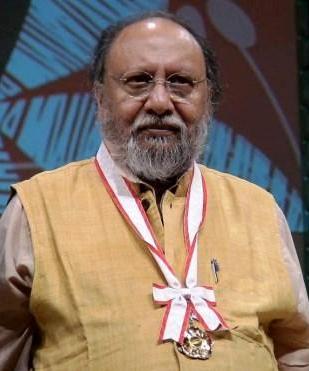
If we zoom in on de Sam Lazaro’s study of the Guptas, two other interesting things emerge about this traditional Hindu family’s approach to their faith. First, despite Deepak and Bhavana Gupta’s embrace of tradition, they are pragmatic and flexible. They may be troubled their children face toxic cultural forces and argue too much, but they are happy they question religious practice. As the parents report (clearly with some satisfaction), ‘The children question the Hindu practice of paying priests to perform prayer services for their intentions, akin to a Roman Catholic tradition of paying a priest to say masses.’ Second, as scholars often recognise in Hinduism, even in a traditional Hindu home the old coexists with the new. Or, put another way, Hinduism has a remarkable capacity to pile on the new without losing the old. Adaptation is as common as confrontation and accommodation.
Before turning to Hinduism’s political face in India today, a further word on the impact of technology on Hinduism’s public profile. In their fascinating 2020 study of technology and the work of four SBOs (Spirituality Based Organisations) entitled, ‘Digital Divine: Technology use by Indian Spiritual Sects in their study on use of technology’ (2020),[3] Azhagu Meena, Varuni Bhatia, and Joyojeet Pal profile the creative use of (post-colonial) technological developments by Hindu SBOs. They conclude: their study shows ‘digital technology has facilitated new forms of engaged spiritual practice which exist alongside, rather than in opposition to, modern life’. In other words, in keeping the convictions of Aasthva TV bosses, technology isn’t so much a threat to traditional Hindu spirituality as a potential enhancement of it.
To Aasthva TV, the Guptas need have no fear for their young. I wonder. In such fertile ground, technological piracy is seeded that loots good and markets evil. For now, we accept the conclusions of ‘Digital Divine’:
[F]rom community building to everyday practices, organizational management to dissemination of charisma, philanthropy to social service – all point to a large-scale use of instruments and infrastructures of development for religious and spiritual ends.
Hence, technology, the report concludes, ‘allows this level of engagement seamlessly, and across geographies’ and, crucially, enables SBOs to participate in development in a much more direct fashion through philanthropy and social service programs. Though the scope of their work is limited, the authors are confident that further research into SDOs would illuminate the interrelationship of technology and modern India religiosity.
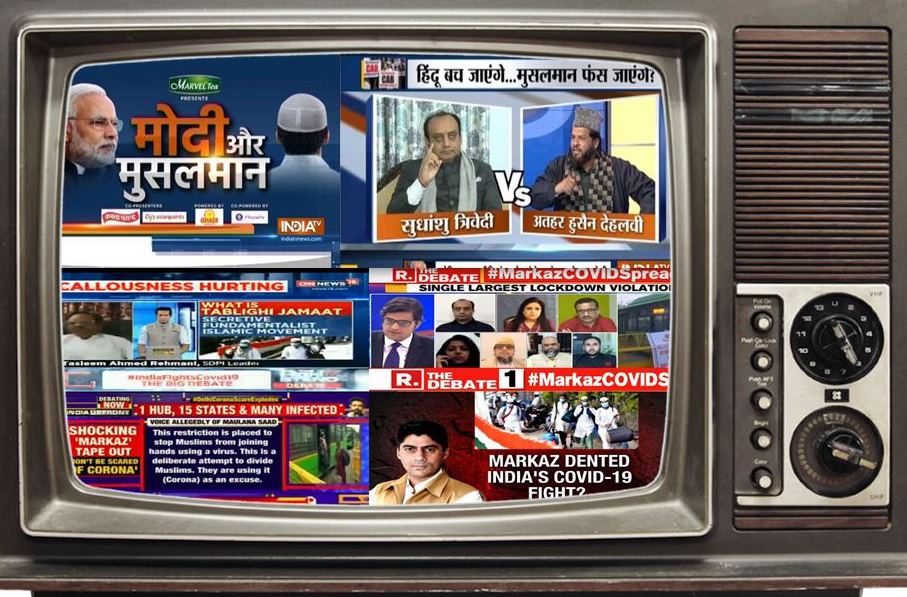
(The New Learn)
Turning to the more complex and contentious issue of the relationship between Hindu culture and modern Indian politics, the picture is mixed. The sensibilities of the Guptas and the energy of Aasthva TV, and everything in between, are found here, too. Though India is presently led by a right-wing, traditionalist, Hindu leader and party, my life and work have consistently revealed substantial diversity in Hindu ranks and in perception of what it means to be ‘a Hindu Indian’. In this, Hinduism is not so different from other faith traditions. So, Hinduism today has its right-wing traditionalists (with, at times, extreme views on spiritual discipline and party loyalty), its left-wing modernists (who view Hindu Indian culture and tradition as living, evolving, adaptable realities) and its ‘cultural Hindus’ (Indians who are Hindu by tradition not by conviction, and for whom Hindu practice and piety are polite options not spiritual obligations). Such diversity may not be good news for all, but it reflects Hinduism’s time-honoured capacity to welcome difference and encourage open-mindedness.
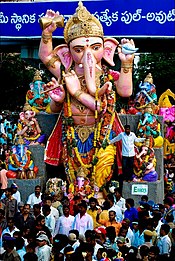
What, then, of today? To the bestselling author and columnist Chetan Bhagat (b. 1974), ‘India’s Hindu community, being in political control, has never had it so good in terms of profile and power.’[4] He points out: ‘Hindus are over 80% of the population … A Hindu priest is C[hief] M[inister] of India’s most populous state. Social media is dominated by Hindu support … Politically, socially, culturally – India’s Hindus currently dominate in all aspects.’ As a consequence, ‘We can finally make a wonderful nation, comprising the best aspects of Hindu culture and become a global superpower too.’ To be sure, more than at any time since Independence, India has reclaimed its Hindu identity. To some, it is clear, the socio-political and economic benefits of a close alliance between Hinduism and modernity are all too clear. Not conflict or suspicion here, just mutual empowerment.
For all his palpable optimism for this moment in India’s history, Bhagat’s confidence is balanced by caution. ‘Practically’, he points out, ‘whenever religion starts playing a more and more dominant role in politics, governance, culture and societal norms, there are problems.’ Look, he says,
Pre-revolution Iran was a free, progressive society. Pakistan has suffered immensely for choosing religion over a free democratic society. Christian crusades hurt economies in medieval times. ISIS destroyed economies wherever it went. Religion dominating everything destroys economies and society.
Noting India’s situation, Bhagat observes,
One might say that Hinduism is different. It isn’t about a religion’s teachings or text. When a society places religion above all other values – justice, freedom, equality, opportunity, infrastructure, economy – a nation ultimately suffers.
To Bhagat, the context and history of India create unique challenges and opportunities. As he points out, ‘We have more variety in culture, language, religion than any other nation.’ More than this, though India ‘never had a democracy in its history’ and modern India was ‘somewhat haphazardly designed’, the British ‘left us some institutions that enable a modern democracy – courts, parliament, executive and the bureaucracy’. But he urges (controversially to some), ‘If we do not guard these institutions, if religion is all we care about, we risk giving up becoming an advanced nation and in the worst case, slipping into fundamentalism.’ To Bhagat, guarding India’s democracy, freedom and institutions isn’t to be ‘anti-national or anti-Hindu’ (and to him, note, democracy ‘is not currently under threat’); however, he believes, ‘the needle has slightly moved towards Hindu dominance/fundamentalism.’ ‘Hindu dominance at all costs?’ he asks. Perhaps not; ‘or maybe just … respect for our religion but also keep[ing] India’s foundations of a modern democracy intact?’ In short, ‘Enjoy the Hindu moment but keep India intact too.’
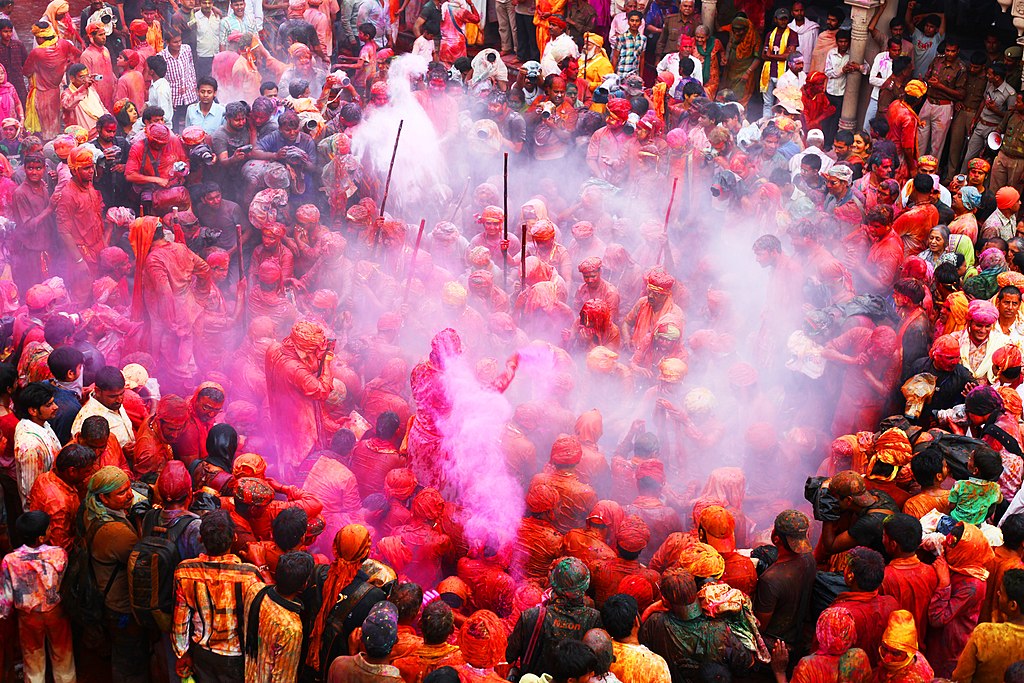
Bhagat’s note of caution is important. The history of modern India is neither peaceful nor coherent. For all its prominence, Hinduism has rarely been a rock on which to build national stability and a cohesive identity. In his study of modern religious movements in India, the Scottish missionary educator J.N. Farquhar (1861-1929) identified four types: those that favoured substantial reform (1828-1912), those that defended old religions (1870-1913), those focussed on religious nationalism (1895-1913) and those behind social reform and public service (1828-1913).[5] As this broad schemata implies, British colonialism neither envisioned nor encouraged socio-cultural stasis in India. Hinduism – though rightly presented by Farquhar as the preeminent spiritual and cultural reality in India – was not the only ‘religion’ on the block. The Raj recognised – and facilitated – religious diversity and religious reform: it also provided an elite educational context in which democratic ideals blossomed. But India was always a divided nation; an ‘artificial construct’, to defenders of the nation’s myriad cultures, regions and languages. To some, reform was about social and religious progress, to others recovery of old Hindu ideals. This diversity in modern Indian history is something right-wing fundamentalists choose to forget. But other problems lurk beneath the surface.
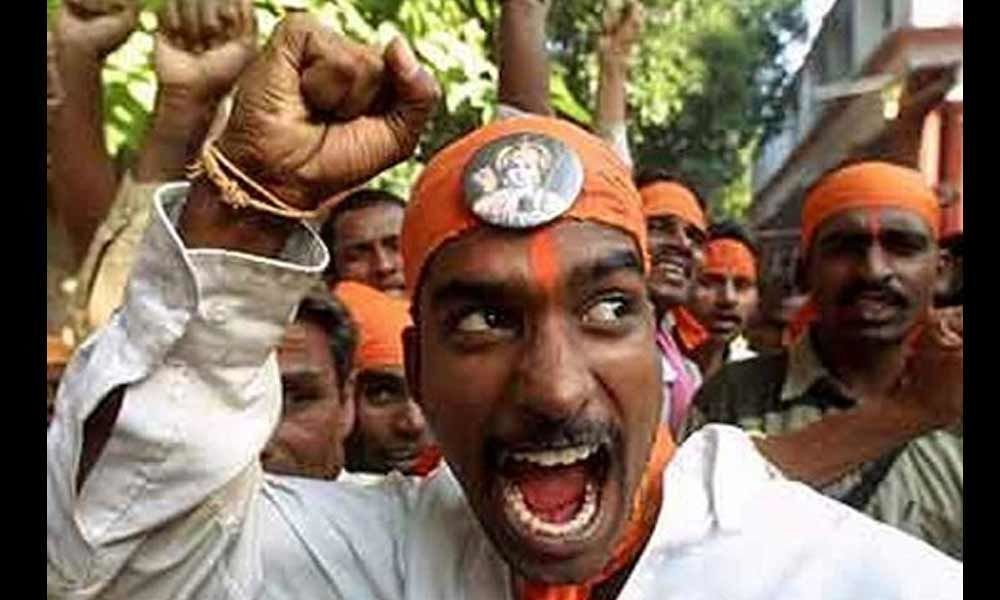
For all their socio-political energy and spiritual appeal, ‘progressive’ Hindu reform movements have often struggled.[6] Their aims have been unclear and/or controversial. They have suffered from internal conflict. Division and disagreement continue to plague Hindu activism. Take the case of Swami Agnivesh (1939-2020), former head of the late-19th-century monotheistic Hindu reform movement Arya Samaj.[7] Swami Agnivesh was expelled by Arya Samaj in 2008 for radical and progressive ideas.[8] He claimed, critics said, ‘Not all Hindus belong to the BJP, nor does BJP represent Hinduism in its spiritual sense.’ For such, this bold social activist, and campaigner against indentured servitude, was blackballed by fellow Hindu radicals. Or, what of Swami Muktidananda, President of the equally old Sri Ramakrishna Mission? In his book A Call for Progressive Spiritual Hinduism – The Vivekananda Way (Mysore, 2022), Swami Muktidananda supports the politicisation of modern Hinduism. He calls on Hindus of all strata to practice Hinduism as Sanatana Dharma (Lit. Eternal Truth), viz. following the teaching of the movement’s influential founder Swami Vivekananda (1863-1902).[9] The book places the temple at the centre of everyday life, as a place of worship and nurture in Sanatana Dharma (as now re-articulated by Swami Muktidananda himself). To critics, this ‘neo-Temple’ movement is dangerously caste-less. However, to Swami Muktidananda, ‘Hindu temples have always been centres of service to the country and dissemination of spiritual knowledge.’ As these examples illustrate, the potential for conflict over ideas, power and position, is very real.
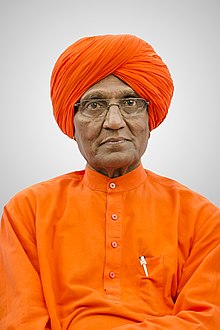
There is one further modern perspective to take cognizance of; namely, that Hinduism, as presently conceived, is the spiritual and cultural residue of British colonialism. In other words, Indian identity found in classical Hinduism a narrative and set of rituals around which a sense of commonality could cohere. Though popular in some circles, and not without historical justification, Pratap Bhanu Mehta, contributing editor to The Indian Express, is highly critical of this reductionist view of Hinduism. He writes: ‘Many academics and self-proclaimed secularists spout this idea, as if this was common sense. But this idea is itself philosophically naïve, culturally ignorant and even politically self-defeating.’[10] Adding, ‘[F]ew historians of modern India or social scientists understand pre-modern sources or are connected to deeper cultural idioms.’ To Mehta, the caste system and the term ‘Hindu’ were, and are, to colonial observers, always shot through with an ambiguity that ‘still marks discussions of Hindu identity’. Mehta is right, though: when Hindu identity is unclear, the potential for distortion and co-option is the greater.
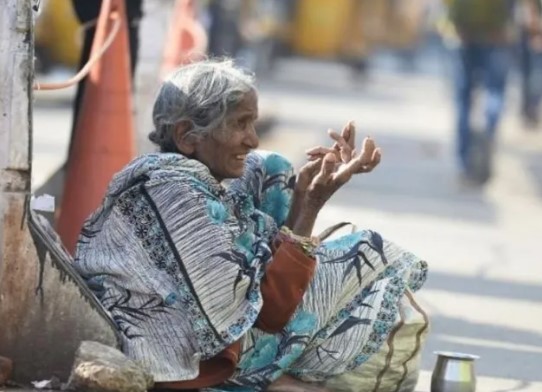
Here are two final quotations from Mehta’s valuable article in The Indian Express, which speak into the complexity of Hindu identity in (post)modern India. The first relates to the intellectual and historical critique of the way Hindu identity has been justified in some political circles.
If the Hindutva project is to homogenise and centralise Hinduism, the answer to that cannot be the historically ill-founded and philosophically inept strategy of denying the historical existence of Hinduism altogether. Or worse, to imagine that pre-modern Hinduism is simply an endless proliferation of sects, walled up, with few interconnections and not dependent on a shared cosmology, social system, or even intellectual concerns.
In other words, condescending dismissals of Hindutva ideology, that fail to re-examine the historical, philosophical, and sociological roots of Hinduism in India, are unworthy of serious consideration. Likewise, secondly, the inverted post-colonialism that makes Hinduism without remainder a creature of colonialism. As he says,
The colonial construction thesis … comes in the way of a deeper understanding of pre-colonial India. … [I]t has produced an academic culture that in large parts is deeply ignorant of how Hinduism works; it has made the academic study of Hinduism a prisoner of false binaries. Saying Hinduism is a colonial construct does not delegitimise Hindutva; it reinforces its central claim about the blasé ways in which Hinduism is sometimes conceptualised. The debate over Hinduism requires greater theological imagination, philosophical subtlety and historical nuance.
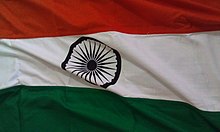
The debate about Hinduism is ongoing. As proponents and critics observe, engagement with it requires theological imagination, philosophical subtlety, historical nuance and political nous. For, as noted at the start, here is a riddle, wrapped in a mystery, inside an enigma. Attentiveness to the abuse of history and an appeal to ‘national interest’ may again be very important.
Dr John Arun Kumar – Associate
[1] Cf. M. Paranjape ‘Tradition, Modernity and Post-Modernity/Region, Nation, and Internation: Challenges in Theory’: http://www.makarand.com/acad/Traditionmodernity.htm; accessed 10 December 2009.
[2] Cf. F. de Sam Lazaro, ‘Hinduism and Modernity’, Religion and Ethics (22 January 2010): https://www.pbs.org/wnet/religionandethics/2010/01/22/january-22-2010-hinduism-and-modern-india/5510; accessed on 2 December 2022.
[3] A. Meena SP, V. Bhatia & J. Pal, ‘Digital Divine: Technology use by Indian Spiritual Sects’, Information and Communication Technologies and Development, June 17–20, 2020 (Guayaquil, Ecuador; New York, NY): https://www.microsoft.com/en-us/research/uploads/prod/2020/07/Digital-Divine.pdf; accessed 13 December 2022.
[4] C. Bhagat, ‘What should Hindus want? India’s best asset is its modern democracy, not one community dominating others’, Times of India (31 July 2021): https://timesofindia.indiatimes.com/blogs/The-underage-optimist; accessed 2 December 2022).
[5] J. N. Farquhar, Modern Religious Movements in India (New York, 1915).
[6] i.e. the early-19th-century Brahmo Samaj and late-19th-century Arya Samaj and Ramakrishna Mission.
[7] Arya Samaj was founded by the sannyasi Dayanand Saraswati in 1875. The movement believes in the infallible authority of the Vedas and deduces values and rituals from them.
[8] P. Puri, ‘Swami Agnivesh: A Progressive Hindu Crusader’ (12 September 2022): https://progressivehindudialogue.com; accessed 21 December 2022.
[9] Cf. ‘How to make Hindu religion a practicing religion among different strata of our society?’ Star of Mysore (17 December 2022), 8.
[10] Cf. P. B. Mehta, ‘Why it’s wrong to say that Hinduism is a product of colonialism?’ The Indian Express (13 October 2022): https://indianexpress.com/article/opinion/columns/why-its-wrong-to-say-that-hinduism-is-a-product-of-colonialism-8203006; accessed 23 January 2023.
